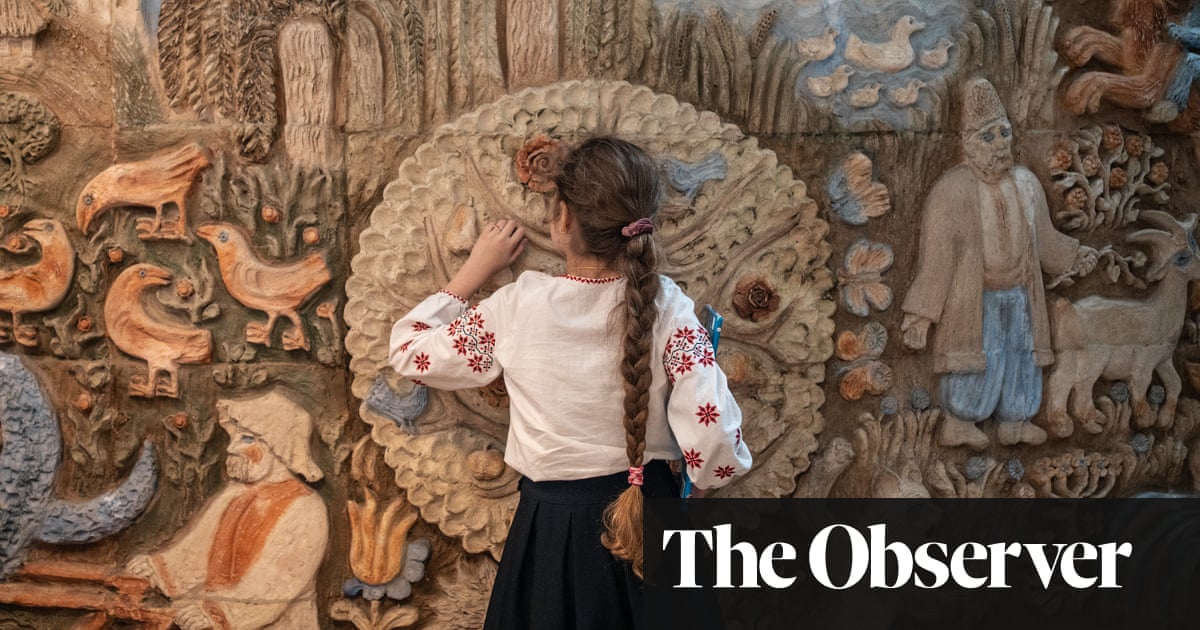
With a container on his back, Karim Soura, 13, spent nine hours a day, six days a week walking through the cocoa fields around his home in Mabéhiri 1 in south-western Ivory Coast, spraying chemicals on the crops.
“I didn’t like the work, it hurt my legs and my knees. I didn’t know how to get rid of the pain,” he says.
His mother told him she needed him to work the fields after his older sister married and left home. It’s illegal in Ivory Coast for children under the age of 18 to undertake hazardous work, like using a machete, or handling agrochemicals. But Karim’s parents had few options and could not afford to send him to school.
About seven months ago, Karim was approached by someone who worked for a charity who told him that instead of labouring in the fields all day, he could be trained in a job of his choosing.
His mother was told that sending him on the course would also mean she would not be reprimanded by the authorities for letting him work in the first place. And so Karim enrolled in the centre for victims of child labour in the nearby city of Soubré. For six months, he learned how to sew.
Soura is one of more than 200,000 children who have escaped hazardous work and exploitation as part of Ivory Coast’s own efforts to tackle child labour in the cocoa industry.
Ivory Coast is the world’s largest cocoa producer, accounting for an estimated 45% of production, but the industry has relied heavily on child workers. Cocoa is an integral part of the culture here and employs about 6 million people, according to government figures. With school costs for books, uniform and transport too expensive for many families, children are often pulled into work.
But, spurred on by international pressure and support from the first lady, Dominique Ouattara – who chairs the national monitoring committee to combat trafficking, exploitation and child labour and is founding president of the Children of Africa foundation – the government took action.
Ivory Coast passed a number of laws, beginning in 2010 with the prohibition of child trafficking and the worst forms of child labour. In 2017, it adopted a list of hazardous jobs prohibited for under-18s, and a list of work authorised for those aged between 13 and 16, which they can do when not in class.
School was made compulsory and free of charge for all children from six to 16 and the minimum age for full-time employment raised from 14 to 16. There was an extensive campaign to raise awareness of what constituted child trafficking, exploitation and hazardous work. Local government officials, magistrates, police officers, journalists and social workers, among others, received training on how to spot and eliminate child labour.
The centre in Soubré – one of three in Ivory Coast – opened in June 2018. Children are referred by charities, local organisations or the police. So far it has worked with 486 children aged five to 18, according to Flora Djebre Leocadie, its director. The aim is to reunite children who have been trafficked with their families, or return those from abroad to their home countries, and get them back into education. Some children, like Soura, will receive training in hairdressing, sewing or breeding rabbits (a popular meat in Ivory Coast), among other subjects, and take up apprenticeships when they leave.
“The service welcomes children from all over Ivory Coast … we tell [children] that their place is not in the fields.”
Some children arrive with nothing, and can be traumatised, she says. A nurse and a psychologist are on the staff. Children are given clothes, toiletries and anything else they might need and usually stay for six months. There are dormitories, classrooms and a room where children can go to relax, with a television.
In June 2020, Ivory Coast established six regional police units dedicated to fighting child trafficking and child labour.
Aided by a network of informers, they carry out patrols of cocoa plantations and random searches of vehicles at checkpoints in cocoa-growing regions. More than 1,000 traffickers have been arrested and imprisoned since 2012, according to government figures.
This year, 392 traffickers have been arrested and 2,116 children rescued from abusive situations. In 2021, police rescued 1,353 children and arrested 25 people, while five people were sentenced to 20 years in prison – the maximum punishment for child trafficking – and 17 to five years in a high-profile operation in Soubré.
Last month, four people were charged with child trafficking in the south-east of the country.
The main challenges facing these units are a lack of funding and how to manage the growing number of children trafficked into Ivory Coast from neighbouring countries, where conflict and instability are rife, says Luc Zaka, chief of the police unit charged with the fight against child trafficking. Exploitation in illegal goldmining operations is becoming more of a problem than abuse in the cocoa sector, which has long been an area of focus for NGOs and government, he adds. “The situation has improved [in the cocoa sector] … but we must all continue to fight against the phenomenon of child labour. We need to modernise our borders and know who comes in and goes out.”
It is hard to fully measure the impact of Ivory Coast’s efforts to eliminate child labour. In 2021, the US Department of Labor recognised that the country “made significant advancement in efforts to eliminate the worst forms”. A report by Norc (National Opinion Research Center) at the University of Chicago, a social research organisation, found there had been no significant increase in hazardous child labour, which remained at about 39%, in cocoa production between 2013-14 and 2018-2019. The prevalence of child labour in the industry remained stable at 41% between these dates, even though cocoa production increased by 14%. School attendance among children in agricultural households in cocoa-growing areas increased from 58% to 80% between 2008-09 and 2018-19.
But the study also noted that 790,000 children still worked in the industry.
Amourlaye Touré, the west Africa representative for Mighty Earth, a global advocacy organisation, says that although “the phenomenon of child labour is reducing” the problem has not disappeared.
He believes that international chocolate companies should be more proactive as well as the government. “You cannot deny they are making an effort”, he says, “but they can do more.”
Karim has come to the end of his stay at the centre in Soubré. When he goes home, he will start an apprenticeship with a tailor near his village. “If I could go back in time, I would tell [my younger self] not to go to the fields and to attend school,” he says. “Now, my future is sewing. I won’t make my children work in the cocoa fields. I’ll encourage them to go to school so they can get a job.”












